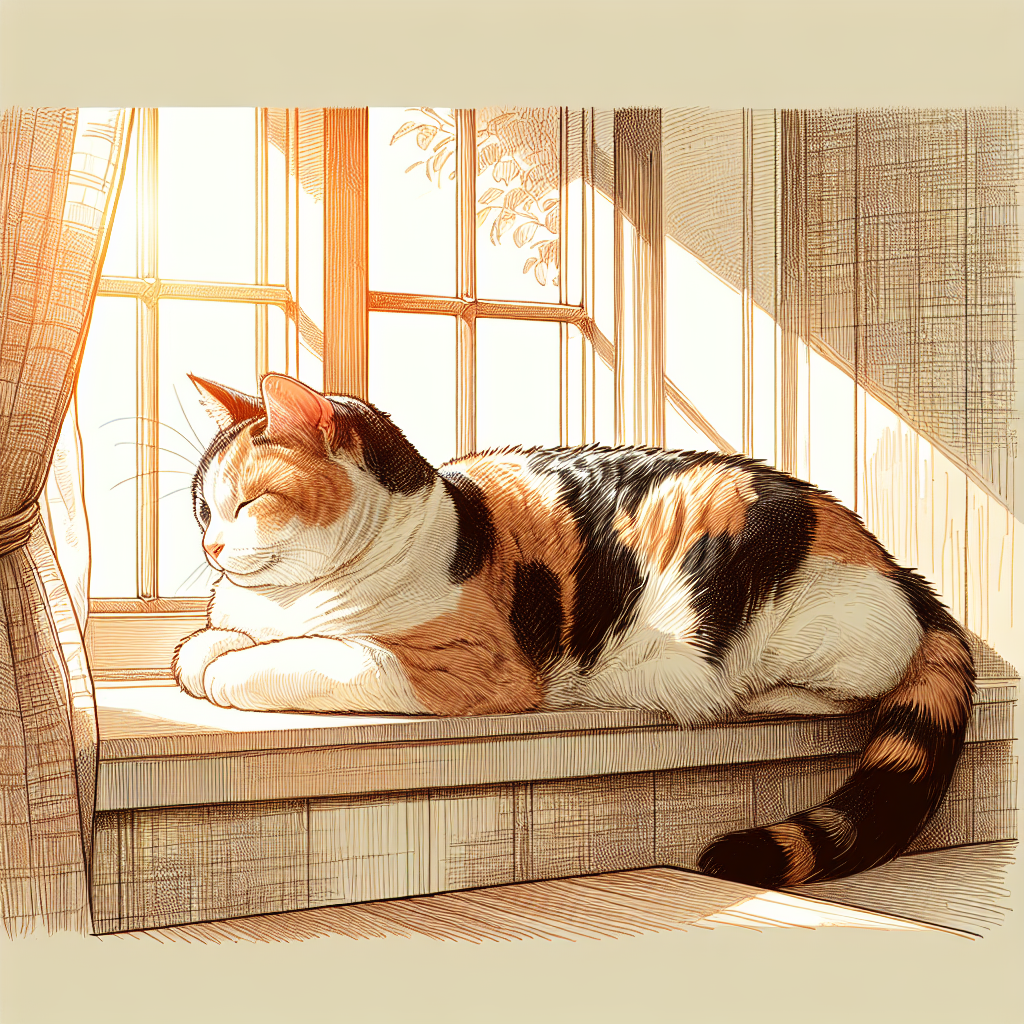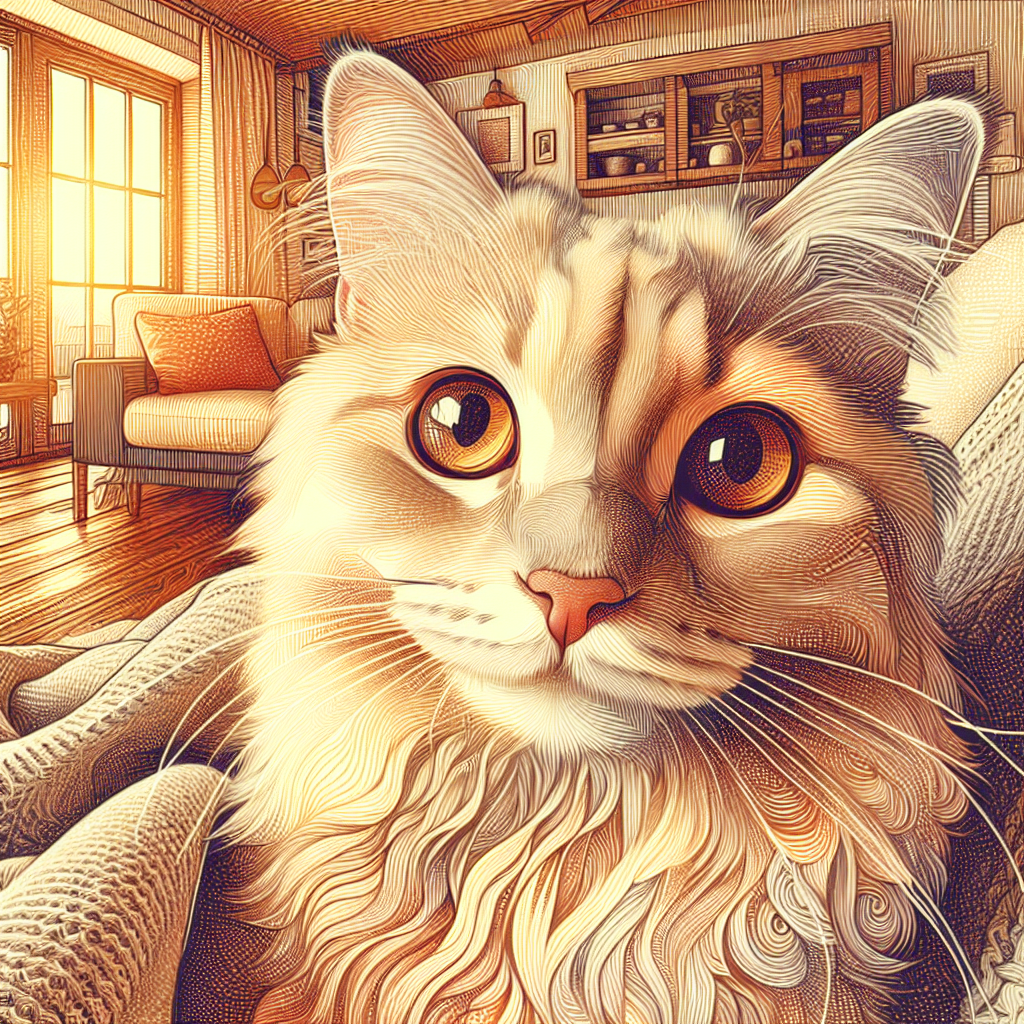Have you always wanted to capture the grace and charm of your feline friend on paper? Drawing a cat can be a rewarding experience, providing not only a creative outlet but also a deeper connection to these remarkable animals. This blog post will guide you through the process of drawing a cat, specifically focusing on the keyword “drawing:a4z_-ymtkr8= cat“. Whether you’re a pet owner, a cat lover, or simply an animal enthusiast, you’ll find valuable tips and techniques here to help you create stunning cat portraits.
The Joy of Drawing Cats
Drawing cats is an art that combines observation, patience, and a keen eye for detail. The keyword “drawing:a4z_-ymtkr8= cat” encompasses the essence of capturing a cat’s unique personality and physical traits on paper. It’s not just about replicating their appearance; it’s about portraying their spirit and the special bond they share with you. In this section, we’ll explore why drawing cats can be a fulfilling hobby for pet owners and cat lovers alike.
Many people find that drawing a cat helps them appreciate their pet’s intricacies even more. From the subtle curve of their whiskers to the fluid motion of their bodies, each element of a cat’s physique offers a new challenge and opportunity for artistic expression. Using the keyword “drawing:a4z_-ymtkr8= cat”, we’ll learn how to observe these details closely and translate them into our drawings.
Additionally, drawing cats provides a relaxing and therapeutic activity. The process of sketching, shading, and refining your artwork can be incredibly soothing. It allows you to focus your mind and find peace in the present moment. By mastering “drawing:a4z_-ymtkr8= cat”, you’ll not only enhance your artistic skills but also discover a wonderful way to unwind and connect with your beloved pets.
Choosing the Right Tools
Before you start “drawing:a4z_-ymtkr8= cat”, it’s essential to gather the right tools. A good set of pencils, erasers, and sketchbooks will make a significant difference in your drawing experience. Each tool has its unique purpose and can help you achieve different effects in your artwork. Let’s explore some of the essential tools you’ll need for drawing cats.
First, you’ll need a range of pencils with varying hardness levels. Pencils labeled with “H” are harder and produce lighter lines, while those labeled with “B” are softer and create darker, richer lines. For “drawing:a4z_-ymtkr8= cat”, having a variety of pencils, such as 2H, HB, and 2B, will allow you to achieve different textures and shades in your drawing.
Next, invest in a quality eraser. A kneaded eraser is perfect for gently lifting graphite from the paper without damaging the surface. It’s especially useful for “drawing:a4z_-ymtkr8= cat” because it allows you to create highlights and correct mistakes with precision. Additionally, a white plastic eraser can help you clean up larger areas and refine your final artwork.
Finally, choose a good sketchbook with smooth, durable paper. The right paper will hold up to repeated erasing and layering of graphite. For “drawing:a4z_-ymtkr8= cat”, consider using a sketchbook with medium-weight paper that can handle detailed work and shading. With these tools in hand, you’ll be well-equipped to start your cat drawing journey.
Understanding Cat Anatomy
To excel at “drawing:a4z_-ymtkr8= cat”, it’s crucial to understand the basic anatomy of a cat. Knowing the structure of a cat’s body will help you create accurate and lifelike drawings. In this section, we’ll break down the key anatomical features you need to pay attention to when drawing a cat.
Cats have a unique skeletal structure that allows them to move with grace and agility. Their flexible spine and powerful muscles enable them to perform incredible feats of balance and coordination. When “drawing:a4z_-ymtkr8= cat”, it’s important to capture this flexibility and fluidity. Start by studying the overall shape of a cat’s body and how their limbs are positioned in different poses.
Pay close attention to the cat’s head and facial features. Cats have distinctively shaped heads, with prominent cheekbones, large eyes, and sharp ears. The keyword “drawing:a4z_-ymtkr8= cat” emphasizes the importance of accurately depicting these features. Observe how the eyes are positioned relative to the nose and mouth, and how the ears vary in shape and size among different breeds.
Another critical aspect of cat anatomy is their fur. Cats have a wide variety of fur textures and patterns, from short and sleek to long and fluffy. When “drawing:a4z_-ymtkr8= cat”, take note of the direction in which the fur grows and how it affects the overall appearance of the cat. Understanding these anatomical details will help you create more realistic and expressive cat drawings.

Sketching the Basic Shapes
Once you have a good understanding of cat anatomy, it’s time to start sketching. Begin your “drawing:a4z_-ymtkr8= cat” by breaking down the cat’s body into basic shapes. This technique will help you establish the overall proportions and structure of your drawing before adding finer details.
Start with a simple circle for the head and an oval for the body. When “drawing:a4z_-ymtkr8= cat”, use light, loose lines to outline these shapes. Don’t worry about perfection at this stage; the goal is to create a rough framework that guides the rest of your drawing.
Next, add guidelines for the limbs and tail. Cats have a natural elegance in their posture, so pay attention to the angles and curves of their legs. For “drawing:a4z_-ymtkr8= cat”, use gentle curves to represent the legs and tail, ensuring that they flow naturally from the body.
Finally, sketch the basic shapes of the facial features. Draw a horizontal line to indicate the eye level and a vertical line to center the face. Place circles for the eyes and triangles for the ears. Remember that “drawing:a4z_-ymtkr8= cat” involves capturing the cat’s unique expression, so experiment with different placements and angles until you find the right look.
Adding Details to the Face
Now that you have the basic shapes in place, it’s time to add details to the cat’s face. The face is often the focal point of “drawing:a4z_-ymtkr8= cat”, so spend time refining the features to capture the cat’s personality and charm.
Start with the eyes, as they are one of the most expressive parts of a cat’s face. When “drawing:a4z_-ymtkr8= cat”, pay attention to the shape and size of the eyes, as well as the placement of the pupils and reflections. Use your pencils to build up layers of shading, creating depth and dimension in the eyes.
Next, focus on the nose and mouth. Cats have small, delicate noses and mouths, so use fine lines to draw these features. For “drawing:a4z_-ymtkr8= cat”, observe the subtle curves and contours of the nose and how it connects to the mouth. Adding these details will make your drawing more lifelike and engaging.
Don’t forget the ears and whiskers. Cats have distinctive ear shapes that vary among breeds, so take note of these differences when “drawing:a4z_-ymtkr8= cat”. Use short, quick strokes to draw the whiskers, making sure they radiate naturally from the muzzle. These small details will bring your cat drawing to life.

Shading and Adding Texture
Shading is essential for creating depth and realism in your cat drawing. By carefully observing the play of light and shadow on the cat’s fur, you can add dimension and texture to your artwork. In this section, we’ll explore shading techniques that will enhance your “drawing:a4z_-ymtkr8= cat”.
Start by identifying the light source in your drawing. Knowing where the light is coming from will help you determine where to place shadows and highlights. For “drawing:a4z_-ymtkr8= cat”, imagine how light falls on the cat’s body and creates areas of contrast. Use your pencils to build up layers of shading, starting with light strokes and gradually adding darker tones.
When shading the fur, use short, overlapping strokes to mimic the texture of the cat’s coat. Pay attention to the direction in which the fur grows, as this will affect the overall appearance of your “drawing:a4z_-ymtkr8= cat”. Vary the pressure on your pencil to create different textures, such as soft, fluffy fur or sleek, smooth fur.
Add highlights to areas where the light hits the fur directly. This will give your drawing a more three-dimensional look and emphasize the cat’s natural beauty. For “drawing:a4z_-ymtkr8= cat”, use an eraser to gently lift graphite from the paper, creating subtle highlights that add depth and realism.
Capturing the Cat’s Pose
The pose of your cat drawing plays a significant role in conveying the cat’s personality and energy. Whether the cat is sitting, stretching, or playing, capturing the pose accurately is crucial for “drawing:a4z_-ymtkr8= cat”. In this section, we’ll explore techniques for drawing dynamic and lifelike poses.
Observing real cats is one of the best ways to understand their movement and posture. Spend time watching your cat or studying reference photos to see how they position their bodies in different activities. For “drawing:a4z_-ymtkr8= cat”, take note of how the cat’s weight shifts, how their limbs bend, and how their tails move.
When sketching the pose, start with a basic gesture drawing. Use quick, loose lines to capture the overall movement and flow of the cat’s body. For “drawing:a4z_-ymtkr8= cat”, focus on the action rather than the details at this stage. This will help you create a dynamic and energetic pose.
Refine the pose by adding more detailed shapes and lines. Pay attention to the anatomy and proportions of the cat, ensuring that the pose looks natural and balanced. For “drawing:a4z_-ymtkr8= cat”, make adjustments as needed to achieve the desired effect. A well-captured pose will bring your cat drawing to life and showcase the cat’s unique character.
Highlighting Unique Features
Every cat has unique features that make them special, whether it’s a distinctive pattern, a quirky expression, or a specific behavior. Highlighting these features in your “drawing:a4z_-ymtkr8= cat” will make your artwork more personal and engaging. In this section, we’ll explore how to capture these unique traits.
Patterns and markings are some of the most noticeable features of a cat. Whether your cat has stripes, spots, or a mix of colors, these patterns add character to your drawing. For “drawing:a4z_-ymtkr8= cat”, observe and replicate these markings accurately. Use varying pencil strokes and shading techniques to capture the texture and color variations in the fur.
Expressions and behaviors also make cats unique. Pay attention to the way your cat looks at you, how they curl up when they sleep, or how they pounce on their toys. For “drawing:a4z_-ymtkr8= cat”, try to capture these expressions and behaviors in your artwork. Use lines and shading to convey the cat’s emotions and movements.
Incorporate personal touches that reflect your relationship with your cat. Whether it’s a favorite toy, a special collar, or a specific spot they love to sit, including these elements will make your “drawing:a4z_-ymtkr8= cat” more meaningful. These unique features will not only enhance your drawing but also celebrate the individuality of your feline friend.
Practicing Regularly
Like any skill, drawing improves with practice. Regular practice will help you refine your techniques and develop your unique style. In this section, we’ll discuss the importance of practice and provide tips for staying motivated and consistent in your “drawing:a4z_-ymtkr8= cat” journey.
Set aside dedicated time for drawing each day or week. Consistency is key to improving your skills and building confidence in your “drawing:a4z_-ymtkr8= cat”. Even short practice sessions can make a significant difference over time. Create a routine that works for you and stick to it.
Experiment with different techniques and styles. Trying new approaches will keep your practice sessions exciting and help you discover what works best for you. For “drawing:a4z_-ymtkr8= cat”, explore various shading methods, line styles, and compositions. This experimentation will enhance your creativity and versatility as an artist.
Seek feedback and learn from others. Join online communities, take art classes, or share your work with friends and family. For “drawing:a4z_-ymtkr8= cat”, receiving constructive criticism and observing other artists’ techniques can provide valuable insights and inspiration. Use this feedback to improve your skills and grow as an artist.
Learning from Mistakes
Mistakes are a natural part of the learning process. Instead of getting discouraged, view them as opportunities to grow and improve. In this section, we’ll discuss how to learn from mistakes and use them to enhance your “drawing:a4z_-ymtkr8= cat” skills.
Identify common mistakes and understand why they happen. Whether it’s incorrect proportions, uneven shading, or misplaced features, recognizing these issues is the first step to addressing them. For “drawing:a4z_-ymtkr8= cat”, analyze your drawings critically and pinpoint areas that need improvement.
Use mistakes as learning opportunities. When you encounter a mistake, take the time to understand what went wrong and how to fix it. For “drawing:a4z_-ymtkr8= cat”, try different approaches and techniques to overcome challenges. Each mistake is a chance to learn something new and become a better artist.
Stay positive and persistent. It’s easy to feel discouraged when things don’t go as planned, but maintaining a positive mindset is crucial for growth. For “drawing:a4z_-ymtkr8= cat”, remember that every artist makes mistakes, and each one brings you closer to mastering your craft. Keep practicing, stay motivated, and celebrate your progress.
Exploring Different Styles
Art is a diverse and dynamic field, offering countless styles and approaches to explore. Experimenting with different styles can help you find your unique voice as an artist. In this section, we’ll explore various styles for “drawing:a4z_-ymtkr8= cat” and provide tips for experimenting and finding your own.
Realism focuses on capturing the subject as accurately as possible. This style involves detailed shading, precise proportions, and lifelike textures. For “drawing:a4z_-ymtkr8= cat”, realism requires patience and keen observation. Study reference photos and use fine lines and shading techniques to achieve a realistic look.
Cartoon and illustrative styles emphasize simplicity and exaggeration. These styles often use bold lines, simplified shapes, and vibrant colors. For “drawing:a4z_-ymtkr8= cat”, cartoon styles allow for creative expression and playful interpretations. Experiment with different line weights and exaggerated features to create a fun and unique drawing.
Abstract and impressionistic styles focus on conveying emotions and impressions rather than detailed accuracy. These styles use loose lines, varied textures, and expressive colors. For “drawing:a4z_-ymtkr8= cat”, explore different media and techniques to create abstract representations of your subject. This approach allows for freedom and creativity in your artwork.
Sharing Your Artwork
Sharing your artwork with others can be a rewarding and motivating experience. It allows you to connect with fellow artists and receive valuable feedback. In this section, we’ll discuss how to share your “drawing:a4z_-ymtkr8= cat” and build a supportive community around your work.
Use social media platforms to showcase your drawings. Sites like Instagram, Facebook, and Twitter offer great opportunities to share your “drawing:a4z_-ymtkr8= cat” with a broad audience. Create a dedicated art account, post regularly, and engage with your followers. Use relevant hashtags to reach a wider audience and connect with other artists.
Join online art communities and forums. Platforms like DeviantArt, ArtStation, and Reddit have active communities of artists who share their work and offer feedback. For “drawing:a4z_-ymtkr8= cat”, participating in these communities can provide valuable insights and inspiration. Share your drawings, seek constructive criticism, and learn from other artists’ experiences.
Participate in local art events and exhibitions. Look for opportunities to display your “drawing:a4z_-ymtkr8= cat” in galleries, art fairs, or community centers. Engaging with your local art scene can help you build connections and gain recognition for your work. It’s also a great way to meet fellow artists and potential mentors.
Conclusion
Drawing a cat is a delightful and rewarding experience that allows you to capture the essence of these graceful animals. By following the tips and techniques outlined in this blog post, you’ll be well on your way to mastering “drawing:a4z_-ymtkr8= cat”. Remember to gather the right tools, understand cat anatomy, and practice regularly to refine your skills.
Experiment with different styles and share your artwork with others to gain feedback and inspiration. Most importantly, enjoy the process and celebrate your progress. Whether you’re a pet owner, a cat lover, or an animal enthusiast, “drawing:a4z_-ymtkr8= cat” is a wonderful way to express your creativity and deepen your connection with these incredible animals. Happy drawing!


